When it comes to the best virtual art museum tours, what could be better than an art historian to curate the best of the best? I am so grateful to Heidi Bilardo, one of my besties for more than 30 years, for her collaboration with me on this post. She has done all the heavy lifting here to share both popular museums and her lesser-known favorites… and then sifted through those collections to share specific paintings and art objects you. must. not. miss! Enjoy.
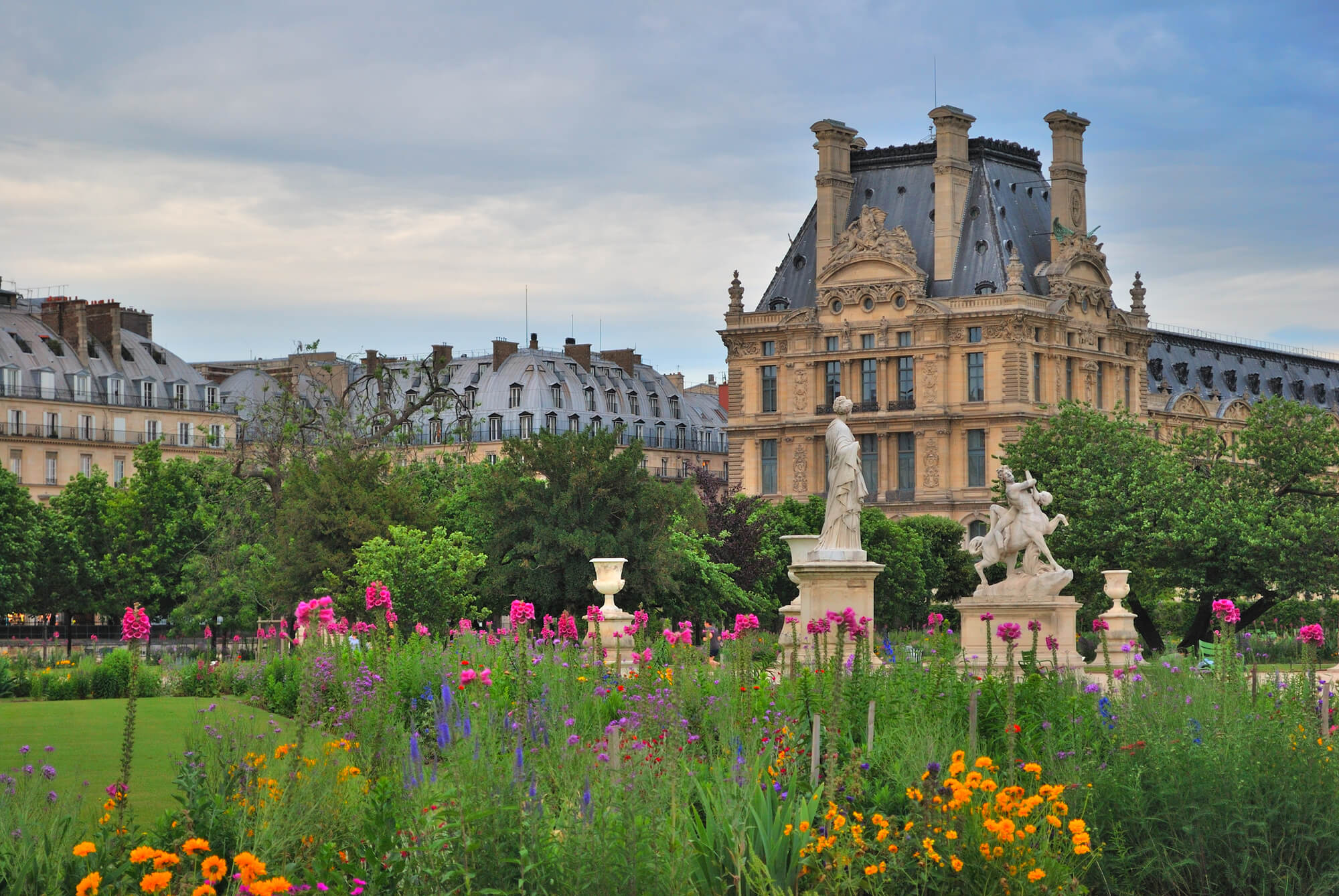
Contents
- Virtual Art Museum Tours
- 1. The British Museum, London, England
- 2.The National Gallery of Art, Washington, DC
- 3. The State Hermitage Museum, St. Petersburg, Russia
- 4. Musee d’Orsay, Paris France
- 5. The Rijksmuseum, Amsterdam
- 6. The Guggenheim Museum, New York City
- 7. The Uffizi Gallery and Accademia Museums, Florence Italy
- 8. National Gallery of Ireland, Dublin Ireland
- 9. Smithsonian Museum of American History
Virtual Art Museum Tours
1. The British Museum, London, England
Why this museum: The British Museum in London is one of most famous museums in London and also one of the great museums of the world! With over 8 million objects in its collection, some 80,000 are on display at any given time.
About the virtual tour: The British Museum’s virtual tour is a delight to navigate. It greets visitors in the open main lobby space with two works of contemporary art that look like enigmatic soldiers with modern-day devices. (Think “boombox radio”). Click into the gallery images at the bottom of the screen and poof! You’re in a new gallery.
Visit the British Museum virtual tour here.
Don’t miss:
• Rosetta Stone – famous for the three languages that finally made it possible to translate ancient Egyptian hieroglyphics. Written on the Rosetta Stone is the commemoration of King Ptolemy V—a Greek dynasty—in ancient Egypt, taking the throne at age 13 in the year 196 BCE. (Side note: Cleopatra was also descended from the Ptolemy family.)
• Elgin Marbles – marble sculpture frieze seized by British Lord Elgin in 1801 from the Parthenon in Greece, created in 447 BCE. (In fact, the marbles are still controversial today because they were removed from their place of origin.) The sculptured frieze depicts a battle scene between Centaurs and Lapiths following a wedding with lots of drinking!
• mummies and coffins from ancient Egypt – one of the most exhaustive collections outside of Egypt. The mummies are very well-preserved, and the coffins are varied, including cat coffins. (Just think about all those grain rooms with rodents. Cats were highly valued for their skills, enigmatic look, and disposition).
• Great Court– An architectural gem made of glass and steel, it is the largest covered indoor square in Europe and covers the museum’s reading room. Take a load off and relax here. The atmosphere is transportive and rejuvenating, both in person and virtually!
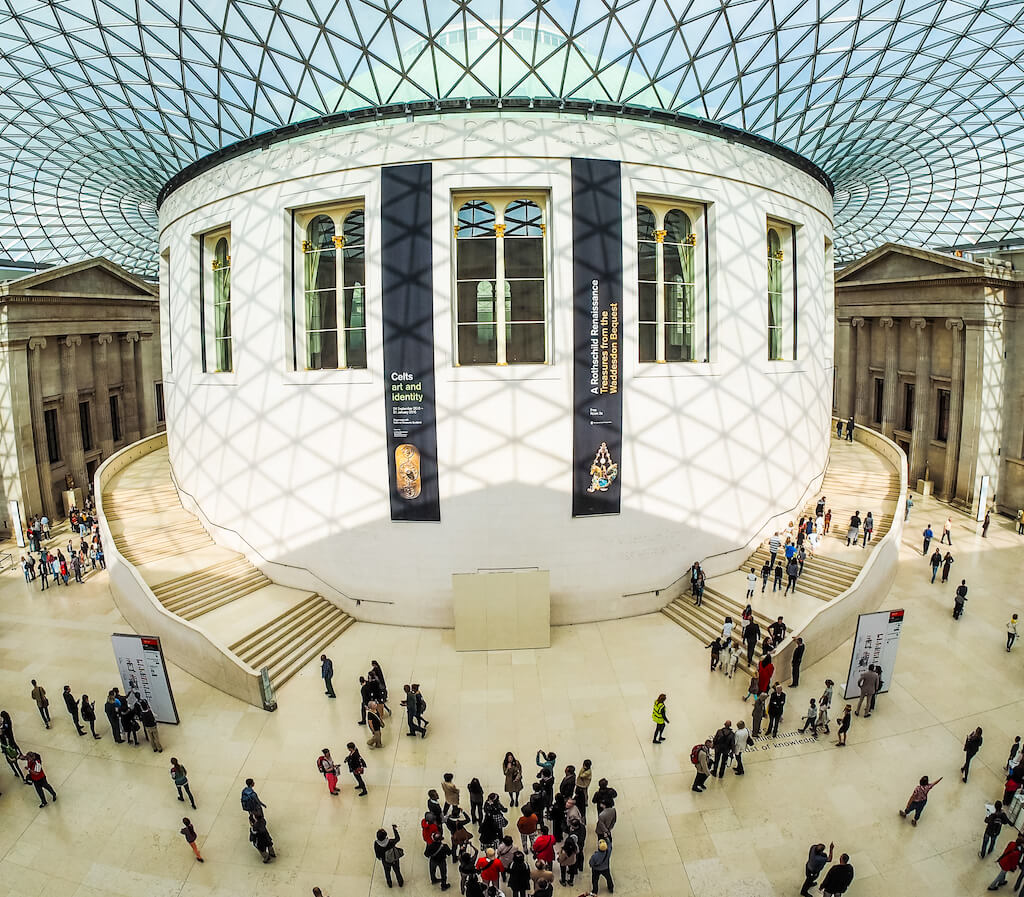
Read more travel tips:
• 17 Ways to Get More Out of a Museum Visit
2.The National Gallery of Art, Washington, DC
Why this museum: The National Gallery of Art in Washington, DC is a great repository of European and American art from the last 600 years! The collection includes 150,000 works…sculptures, decorative arts, prints, drawings, photographs, and paintings.
Notable artists include Leonardo de Vinci, Vermeer, Rubens, van Gogh, Bierstadt, Mirό, Hopper, Gordon Parks, Diane Arbus, and Kerry James Marshall, among many others! Visit the National Gallery of Art here.
About the virtual tours: The National Gallery of Art has created two virtual tours featuring two of its special exhibitions (below). Special exhibitions are unique, once-in-a-lifetime presentations of artwork with dedicated themes, often touring in a handful of cities for a limited period.
Don’t miss these special exhibitions:
• “Degas at the Opera” – 19th-century French painter Edgar Degas had an enduring fascination with the opera and attended the Paris Opera as often as he could. In this special exhibition, we are treated to scenes of performers, performance attendees, stage settings, and backstage preparations through the lens of Degas’ oil paintings, pastel drawings, and sculpture. This special exhibition celebrates the 350th anniversary of the Paris Opera!
• “Raphael and His Circle” – artists in the realm and influenced by High Renaissance master Raphael. Raphael is known for his celebrated depiction of Christian themes in a manner that is graceful, calm, and idealized, using sumptuous colors…deep reds, blues, and golds.
Beautiful, uplifting, and dazzling, this special exhibition commemorates the 500th anniversary of Raphael’s death in 1520 with prints and drawings in an intimate setting.
• Be sure to check out the companion video lectures, too, for in-depth information about the special exhibitions described above.
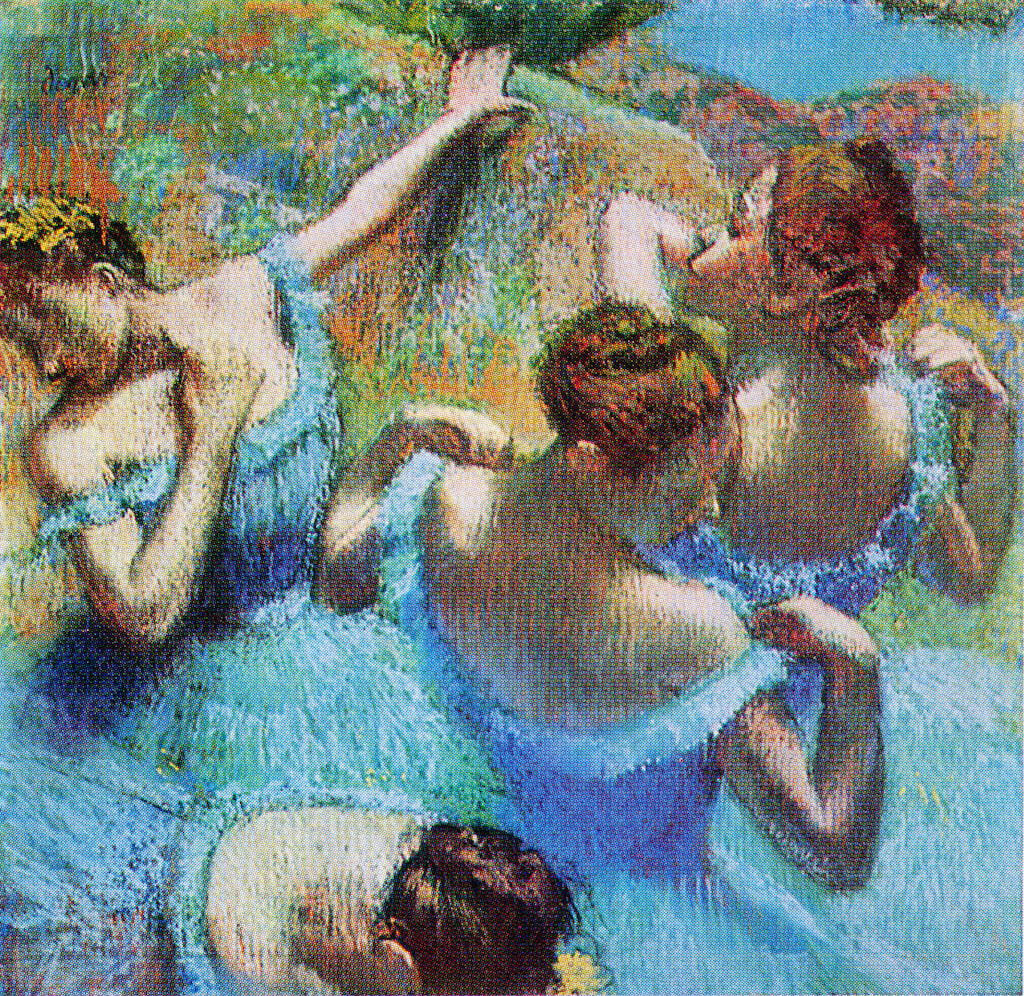
3. The State Hermitage Museum, St. Petersburg, Russia
Why this museum: The State Hermitage Museum in St. Petersburg, Russia is a sumptuous gilded Baroque palace turned museum and has over three million objects!
The neoclassical style architecture (lots of roman columns and archways) was completed in 1787 and encompasses a smaller palace created for Peter the Great 40 years earlier.
About the virtual tour: The State Hermitage Museum’s virtual tour is easy to navigate and allows the online museum visitor to click onto the different levels and stay along for the ride to enjoy the architecture. No need to use directional arrows. It’s easy to explore the museum’s immense collection. Just click on what you’re interested in on the menu. It’s all organized by categories.
Visit the State Hermitage Museum website or head directly to the virtual tour.
Don’t miss:
• Main staircase of the Winter Palace – gold, marble, and sculpture everywhere! Sit back and enjoy the ride as this virtual tour guides you through the palace. You can almost imagine yourself in the proper royal clothing needed to live here!
• Renaissance and early 20th century masterpieces – quietly tucked away are some of the premier works of art in the world. Artists include Titian, Raphael, El Greco, Dϋrer, Picasso, and Matisse, among many others.
• Rothschild Faberge Egg – Russian’s royal house of Romanov commissioned 50 Imperial Easter eggs from jeweler and goldsmith master Peter Carl Faberge. Following the Russian revolution, the new leaders sold most of these jeweled works of art to make some quick rubles.
Today, 43 Imperial eggs are believed to have survived in private and museum collections. Don’t miss the opportunity to see these little masterpieces when you can. (Also, when in St. Petersburg, don’t miss the Faberge Museum nearby. Or head there online. )
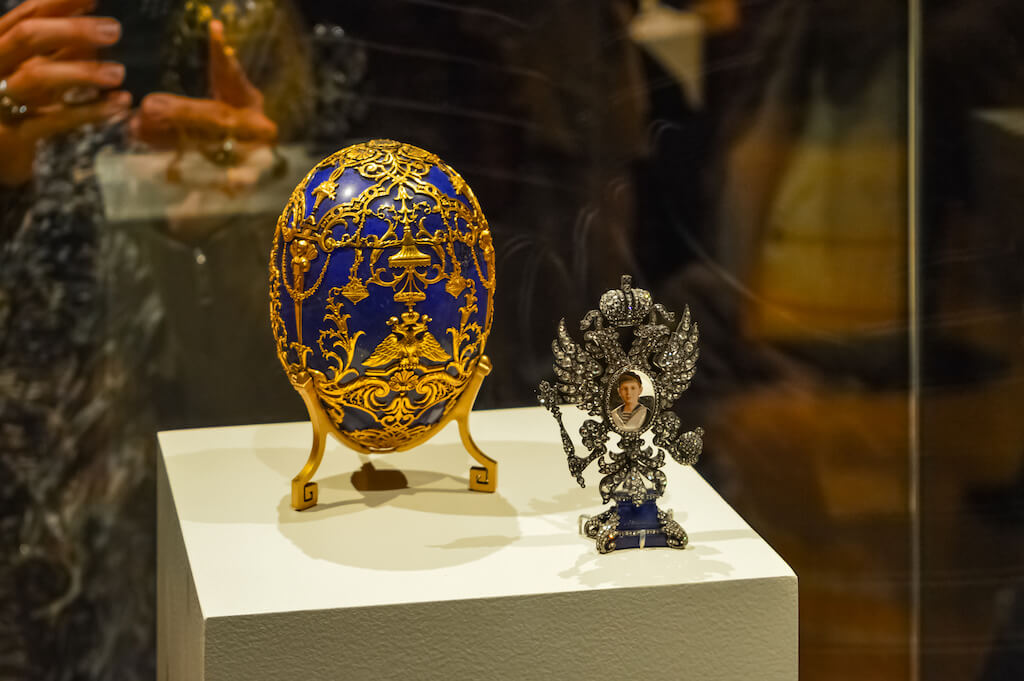
4. Musee d’Orsay, Paris France
Why this museum: Musee d’Orsay holds the largest collection of Impressionist and Post-Impressionist art in the world, including 86 paintings by Monet and 81 paintings by Renoir! The Beaux-Arts (neoclassical in style with touches of Renaissance) architecture of this museum is itself another work of art, having once been a masterful and beautiful railway station.
About the virtual tour: The Google Arts and Culture tour (like a Google online art gallery) for the museum makes it easy to click into its collections in the galleries as well as specific works of art, and the history of the museum and its architecture. Visit the Musee d’Orsay virtual tour here.
Don’t miss:
• Olympia, 1863, by Edouard Manet. Considered to be shocking at the time, Manet’s subject of a non-upper class nude woman presented with flowers from a servant shows us the realism of everyday life.
• Bedroom, 1889, by Vincent Van Gogh. Van Gogh was known to make multiples of his subjects, whether it was a portrait of a friend or, in this case, of his cozy and relaxing bedroom (he painted three of this subject), which he describes as being very soothing to him because of the muted complementary colors in the room!
• Art Nouveau Period (inspired by nature)– Musee d’Orsay has a vast and wonderful collection of Art Nouveau objects and furniture from different countries, including pieces by Frank Lloyd Wright, Antoni Gaudi (Barcelona’s architecture genius) and Carlo Bugatti (who designed more than just cars!).
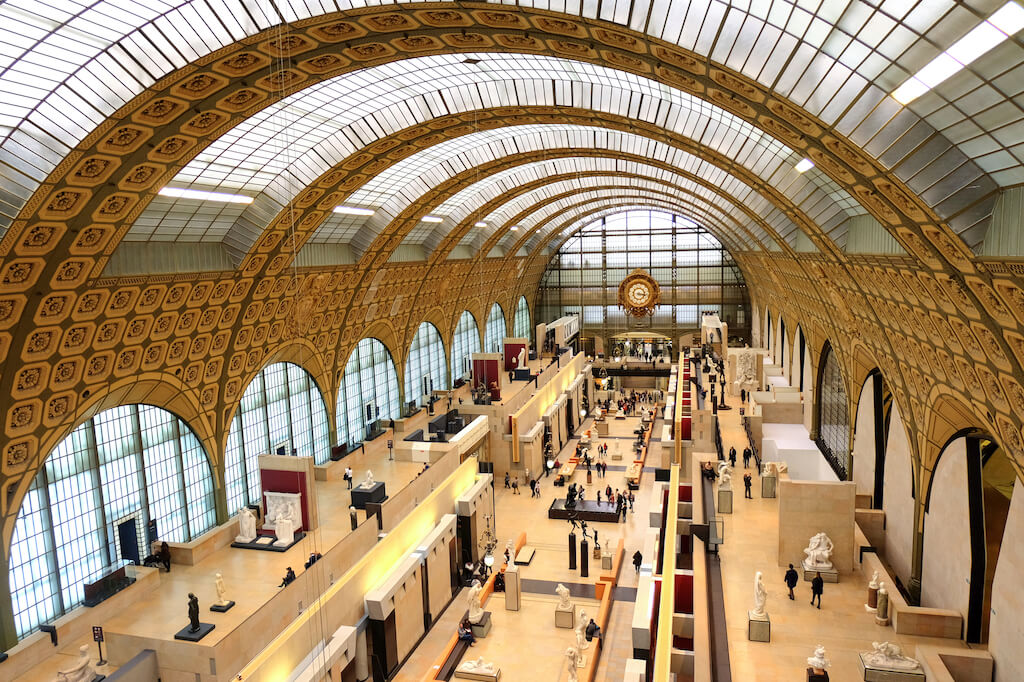
5. The Rijksmuseum, Amsterdam
Why this museum: The Rijksmuseum in Amsterdam, Netherlands is one of the world’s renowned art museums and has a collection of over one million objects. And yet, it feels intimate and contemplative…especially from the comfort of your home!
The Rijksmuseum’s holdings include objects from the middle ages and singularly important masterpieces from the 17th century Dutch Golden Age.
About the virtual tour: The museum’s virtual tour is easy to access and allows you to click to progress through the galleries at your own pace. Visit the Rijksmuseum virtual tour here.
Don’t miss:
• Gallery of Honour – will offer you a glimpse of Dutch’s finest art including the famed, Night Watch by Rembrandt. Flooded with Baroque light (stark contrast of light and dark), the everyday genre paintings are beyond charming and reaffirming of humanity (and a little cautionary of bad behavior!).
• Behind the scenes – a wonderful set of videos describing what goes on when the doors are closed to the public: cleaning of objects (such as a 17th-century warship model with tiny vacuums!), preparation of objects to travel safely to other museums for special exhibitions, and ongoing restoration of paintings and objects. Just click on the videos, complete with audio discussion.
• Operation Night Watch – a special in situ—i.e., staying in place, not moving to the conservation lab—live online view of the massive conservation (cleaning) project of the famed Night Watch painting by Rembrandt. This painting is engrossing from the get-go with its many figures, dazzling clothing, and symbolism of the civilian militia patrolling the streets.
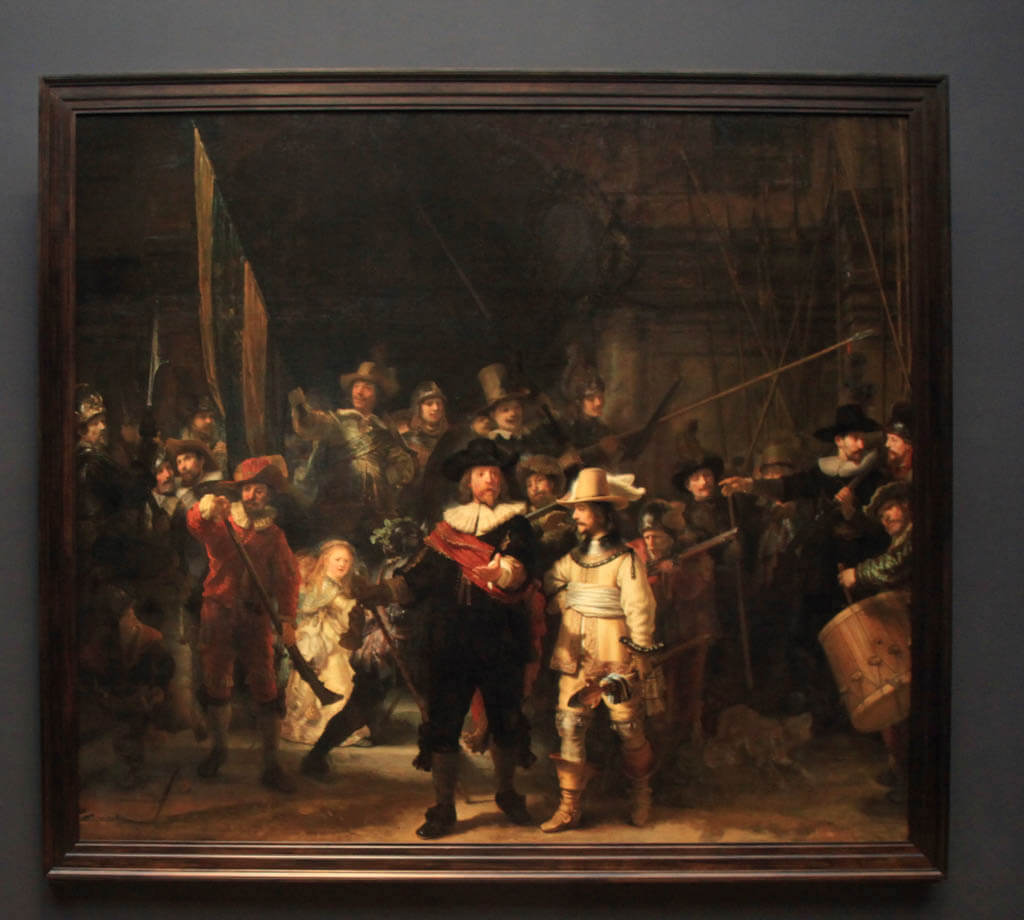
6. The Guggenheim Museum, New York City
Why this museum: The Guggenheim museum in New York City is one of the most iconic buildings in the world!
Designed by famed architect Frank Lloyd Wright, this museum has recently been designated a UNESCO World Heritage Site and is a jewel in the crown of NYC buildings. Guggenheim’s collection focuses on masterpieces from Impressionism, Post Impressionism, early Modern, and contemporary art.
About the virtual tours: Click on audio discussions and slide shows to see artwork from special exhibitions, in-depth conversations with contemporary artists, and renowned artwork from the permanent collection. Visit the Guggenheim virtual (slide shows) tours here.
Don’t miss:
• An audio tour of the building’s story—From inception to completion, you’ll follow the discussion and see building construction images of what will become the Guggenheim’s singularly unique architecture. Can you imagine that architect Frank Lloyd Wright originally wanted to paint the exterior of this building red?
• Highlights of the collection—Narrative descriptions include artwork of Picasso, Degas, Manet, van Gogh, Kandinsky, and other masters.
• Special Exhibition— Fullness of Color: Paintings from the 1960s is all about the theory of color, showcasing the explosion of ideas and creativity in painting that follows the Abstract Expressionism movement of the 1950s.
The wide variety of artwork includes optical illusion, nonobjective (no subject), and monochromatic paintings. It is a feast for the eyes!

7. The Uffizi Gallery and Accademia Museums, Florence Italy
Why these museums: The museums of Florence, Italy are some of the most visited museums of the world. That’s because they reflect some of the greatest European Renaissance achievements in art! It is here in the collections of the Florence Accademia and the Uffizi Gallery that we see the invention of perspective in painting for the first time and three dimensionalities of figures again, after centuries of flat imagery. And, of course, Michelangelo comes onto scene transforming the world of art forevermore.
About the virtual tour: The Florence Accademia and Uffizi Gallery tours offer a peek into their collections through easy clicks into the various rooms and galleries, which were once convents, hospitals, and residences, later turned into museums. Visit the Accademia here and the Uffizi Gallery here.
Don’t miss:
• Michelangelo’s David sculpture, 1504. It’s considered to be one of the finest works of art the world has ever seen and epitomizes the European Renaissance (rebirth) of the love of the arts and literature! Michelangelo was originally commissioned to create this artwork for the Florence Duomo (cathedral) roofline, but upon completion, it was decided that its beauty was so great that it needed to be closer to eye level for all to enjoy!
• Museum of musical instruments – housed in the Florence Accademia, this extraordinary collection of 50 musical instruments features the pianoforte (to become today’s piano) made by Bartolomeo Cristofori in1699 and the tenor viola made by Antonio Stradivari (considered the finest stringed instrument maker ever!) in1690.
• Botticelli’s “Birth of Venus” – A lyrical masterpiece, this painting is part of the Uffizi Gallery’s collection of some of the greatest Italian Renaissance artists!
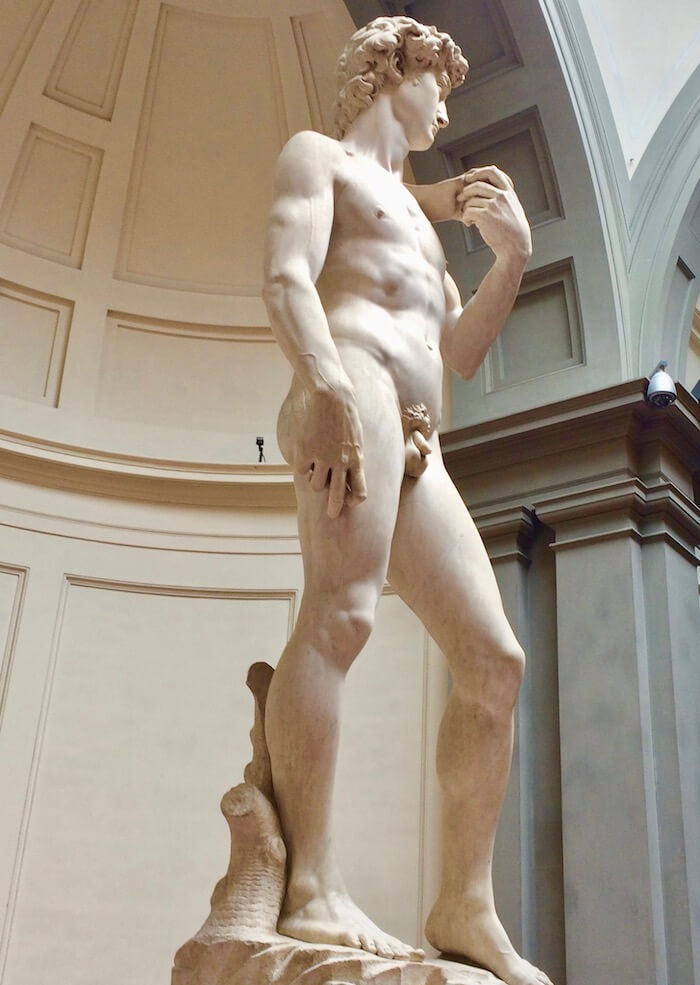
8. National Gallery of Ireland, Dublin Ireland
Why this museum: The National Gallery of Ireland houses some of the most beloved masterpieces from the Dutch and Spanish Golden Age! Included in its collection are works by famed artists such as Velazquez, Murillo, Caravaggio, and Vermeer.
About the virtual tour: The National Gallery of Ireland’s virtual tour is easy and responsive to a quick click to propel one through the galleries. Also great in this virtual tour is the interior architecture, lighting, and wall colors, which reflect the actual preferred colors when the artwork was created. Visit the National Gallery of Ireland virtual tour here.
Don’t miss:
• The Taking of Christ—painted in 1602 by Caravaggio. This compelling biblical scene is enhanced by Caravaggio’s strong sense of light and dark contrast (tenebrism) that adds to the extraordinary drama of the moment of Christ being taken away by Roman soldiers.
(Notice the suits of armor worn by the soldiers, dressed in “modern” attire of the day.) Caravaggio places his subjects very close to the foreground, adding to the immediacy and engaging the viewer as though we are right there with them!
• Woman Writing a Letter with her Maid—painted in 1671 by Vermeer. The work shows a middle-class woman attended by a housemaid who is presumably acting as a messenger for the lady and her lover. The painting is one of only 36 works created by this famous Dutch master.
It celebrates everyday life (genre painting) and shows us so much more…including how the merchant class rises economically during this period. There is much symbolism here. See if you can find all the clues in this masterpiece!
• Return of the Prodigal Son—one of six paintings by Spanish artist Murillo depicting the biblical parable of the prodigal son. The 30-year conservation (cleaning) of these paintings tell the story of sin, repentance, and forgiveness by one of the most celebrated artists from the Spanish Golden Age.
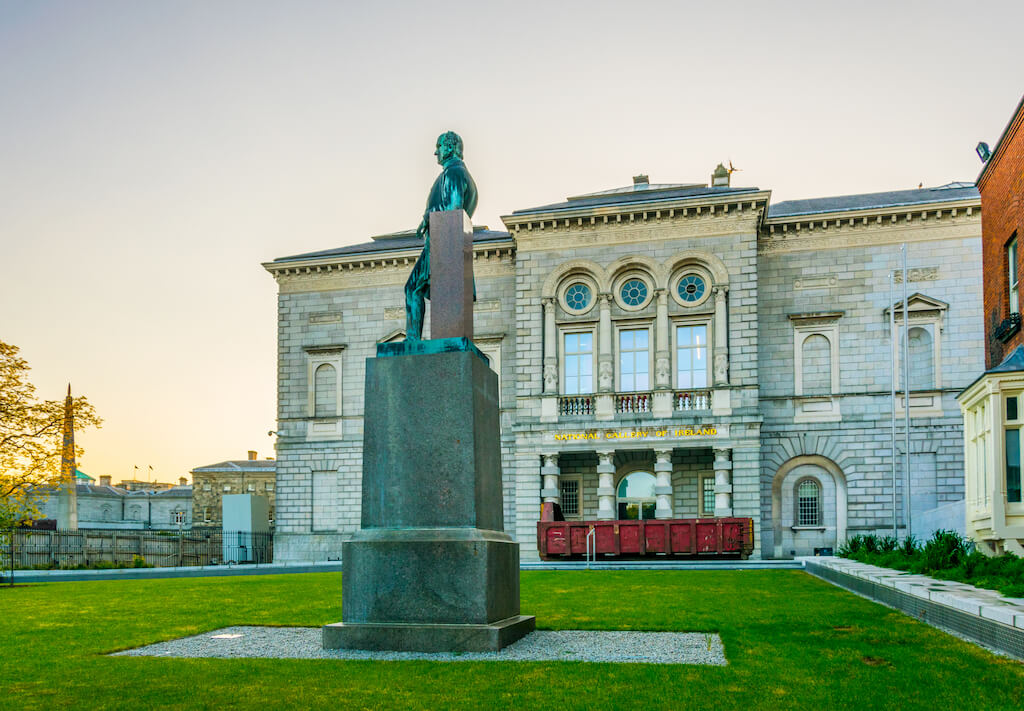
9. Smithsonian Museum of American History
Why this museum: The Smithsonian is a collection of 19 museums—the most famous museums in Washington D.C.—and includes the National Zoo (with panda bears!) Most of the Smithsonian museums are in D.C., but two are located in New York City. The stewardship of these massive museum collections is awe-inspiring and a big part of the responsibility of the U.S. Federal government. One of the most impressive and diverse collections is housed at the Museum of American History!
How to tour it online: Unfortunately, the Smithsonian does not offer a virtual tour. Instead, the best way to enjoy the Museum of American History from your armchair is to use the search toolbar in the collections section to find objects of interest.
The linked pages are filled with rich details for each object and, in many cases, great visuals. So, click your way through the museum and enjoy the history of America. (If the photos don’t immediately pop up, click on the arrows next to the numbers that appear just under the name of each object to view each item from different perspectives.)
Don’t miss these highlights:
• Boxing legend and famed humanitarian Muhammad Ali’s boxing gloves and robe.
• Dorothy’s ruby slippers from the 1939 movie, “Wizard of Oz.”
• Alexander Graham Bell’s telephone (the great grandparent of the smartphone!).
• Gowns of America’s First Ladies. See the inaugural ball gowns of Mary Todd Lincoln in 1864, Lady Byrd Johnson in 1965, and Michelle Obama in 2009.
• Star-spangled banner from 1814. Note the 15 stars!
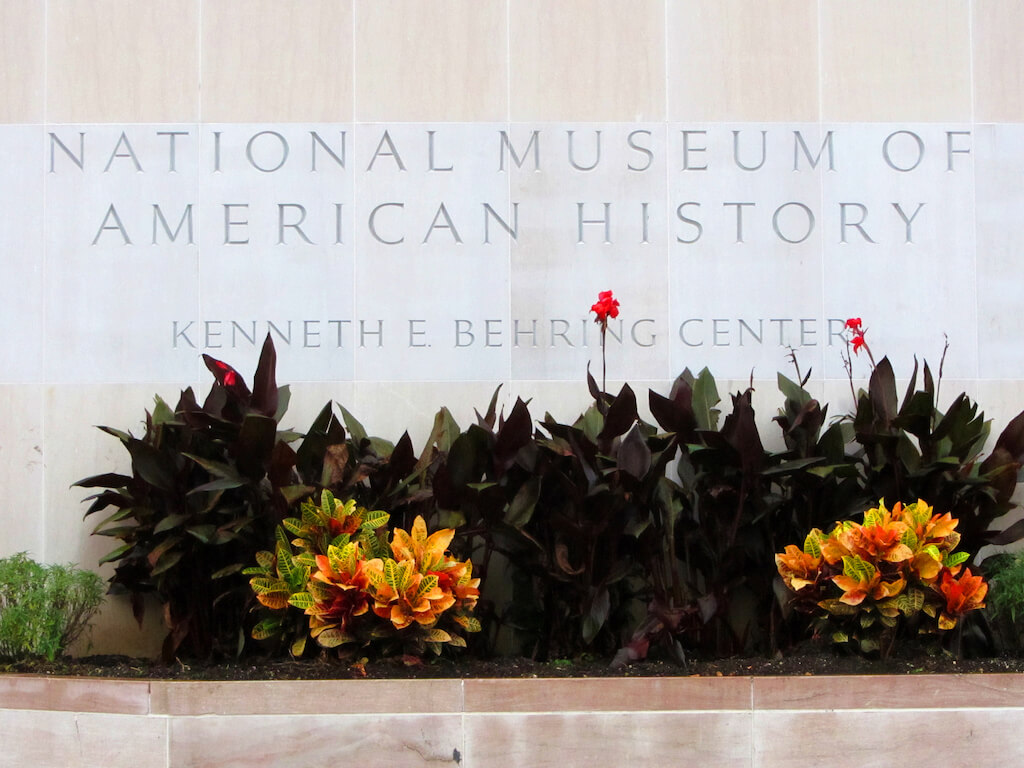
** Special thanks to Heidi Iverson Bilardo for her detailed review of each of these museum tours. Heidi is an art and architectural historian, with a career focus on guiding the commissioning of art, working with public and private agencies. She is a frequently invited college lecturer and is passionate about sharing her love of the arts with students of all ages.
Like this post? Pin it for later!
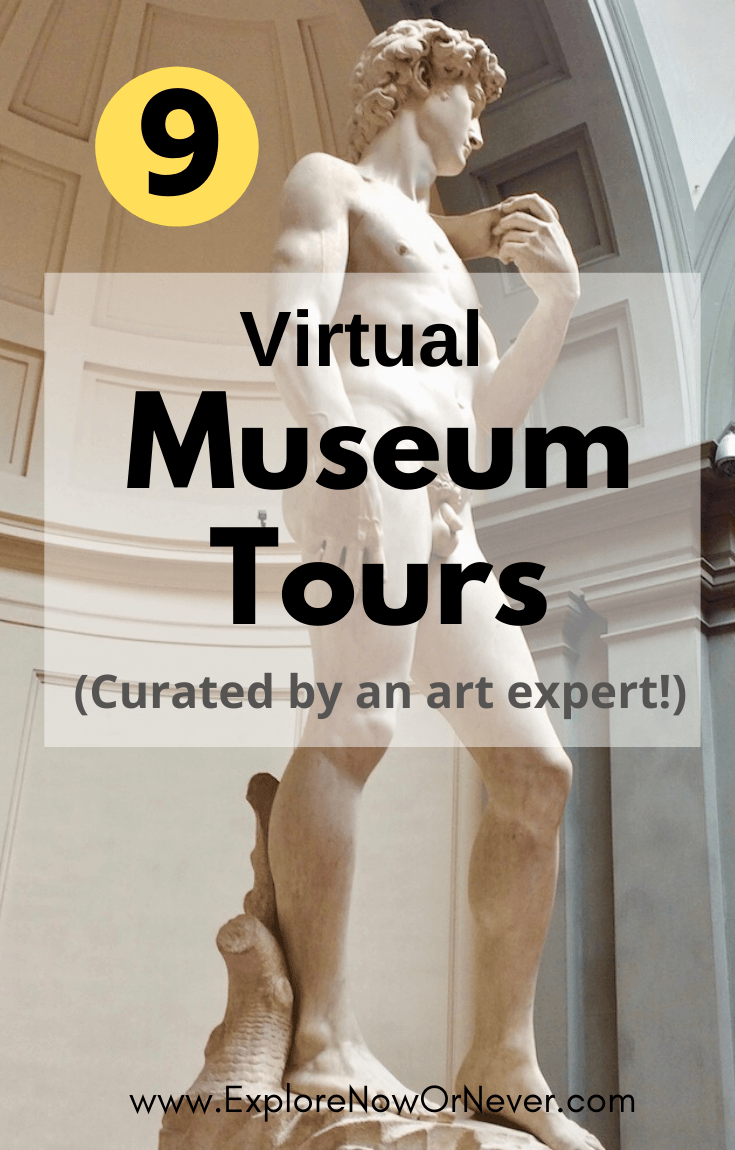
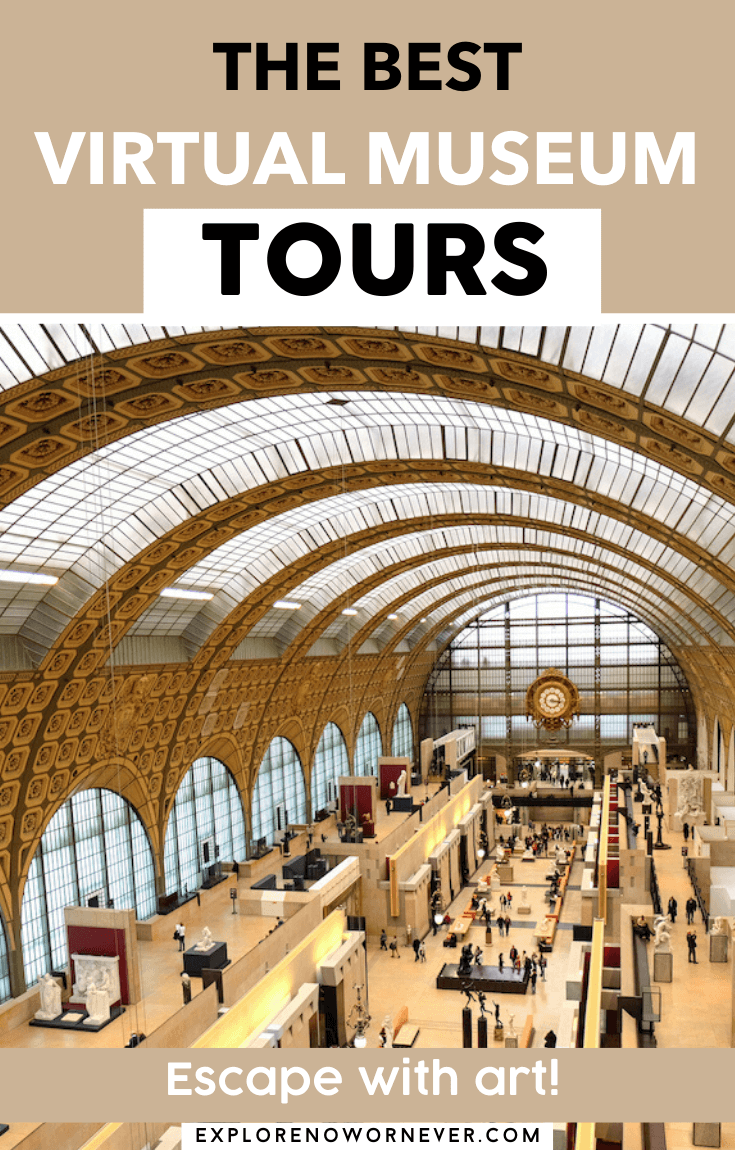
Leave a Reply